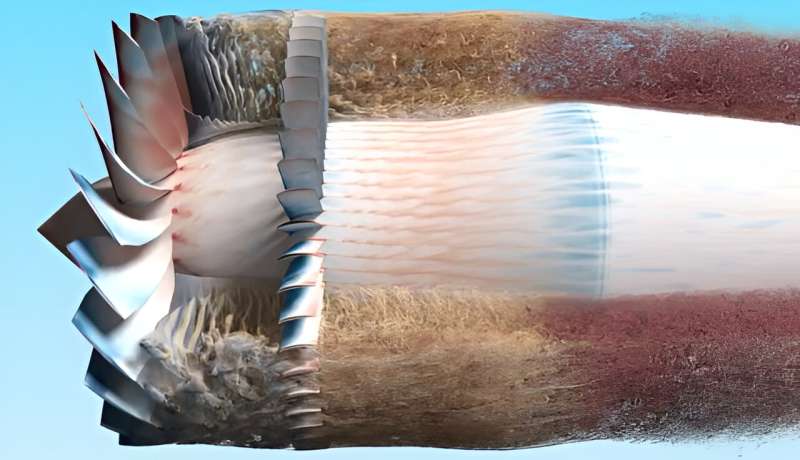This article has been reviewed according to Science X's editorial process and policies. Editors have highlighted the following attributes while ensuring the content's credibility:
fact-checked
trusted source
proofread
Video: Modeling turbofan engines to understand aircraft noise

Airplane engines are loud—just ask anyone who lives near an airport. Increased air traffic from next-generation aircraft has the potential for even more disruptive noise. Researchers and engineers at NASA are working to reduce noise generated by turbofan engines, but each new design requires certification and testing to understand how much noise it will generate during takeoff and approach.
Using the Pleiades supercomputer at the NASA Advanced Supercomputing facility at the agency's Ames Research Center in California's Silicon Valley, researchers have developed software that can model different engine configurations in a more timely and economic manner.
Generating accurate simulations of rotating geometry, like a turbofan, requires time-consuming computations. Using NASA's Launch, Ascent, and Vehicle Aerodynamics software, the team used a sliding mesh technique, which reduces the amount of runtime mapping procedures by analytically matching stationary and rotating points on the modeling grid.
The simulation is based on the Source Diagnostic Test fan, a simplified turbofan engine model used for physical tests. By using a simulation instead of a physical model, testing will require less time and expense, opening the door to easier testing and certification of turbofan engine designs that lower fuel burn and reduce emissions without increased noise levels.
















